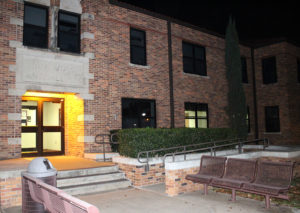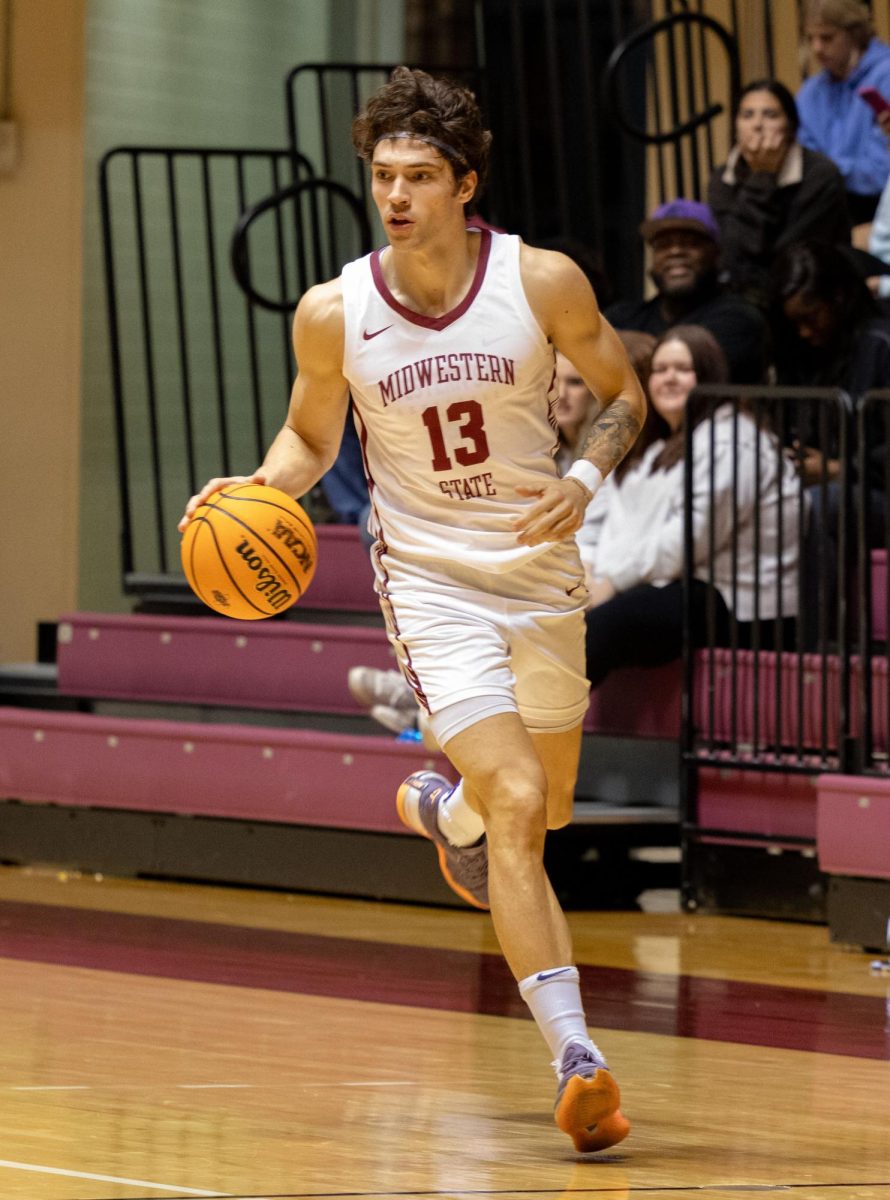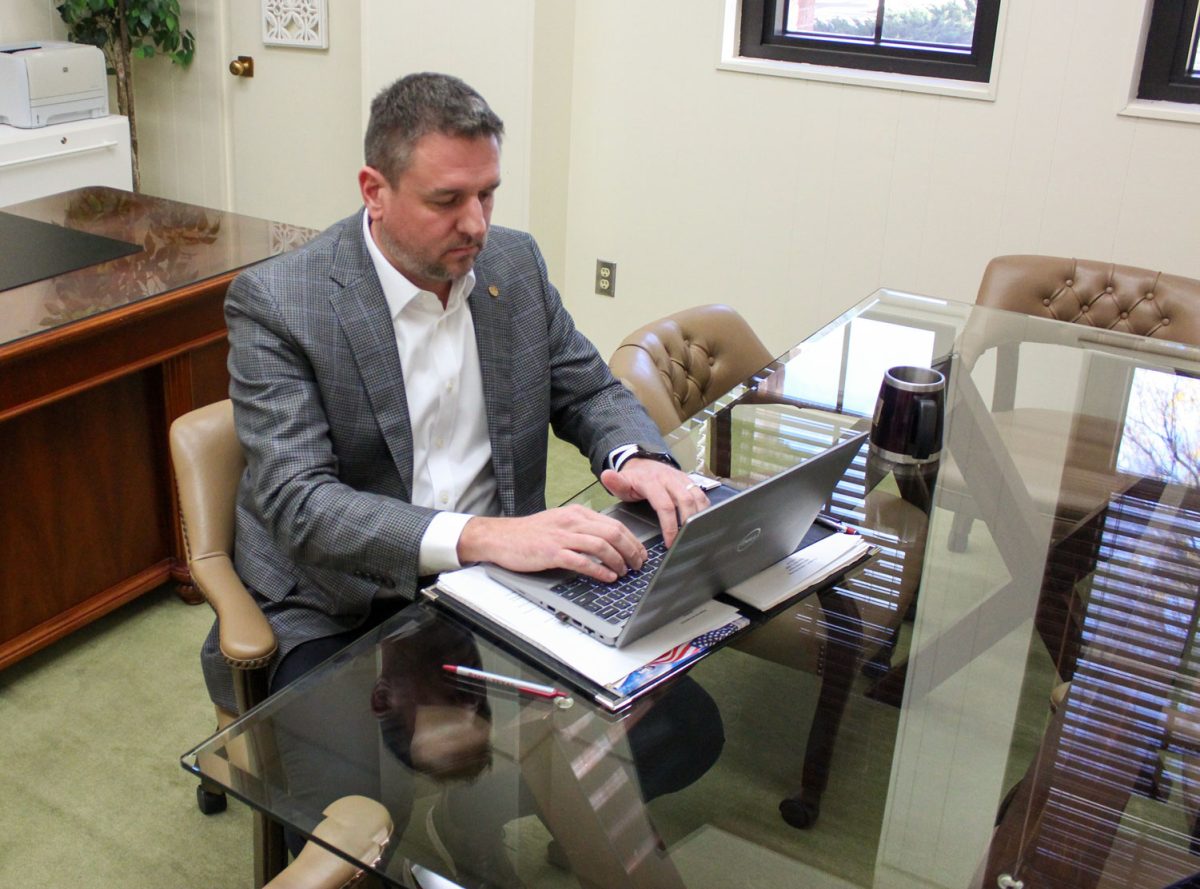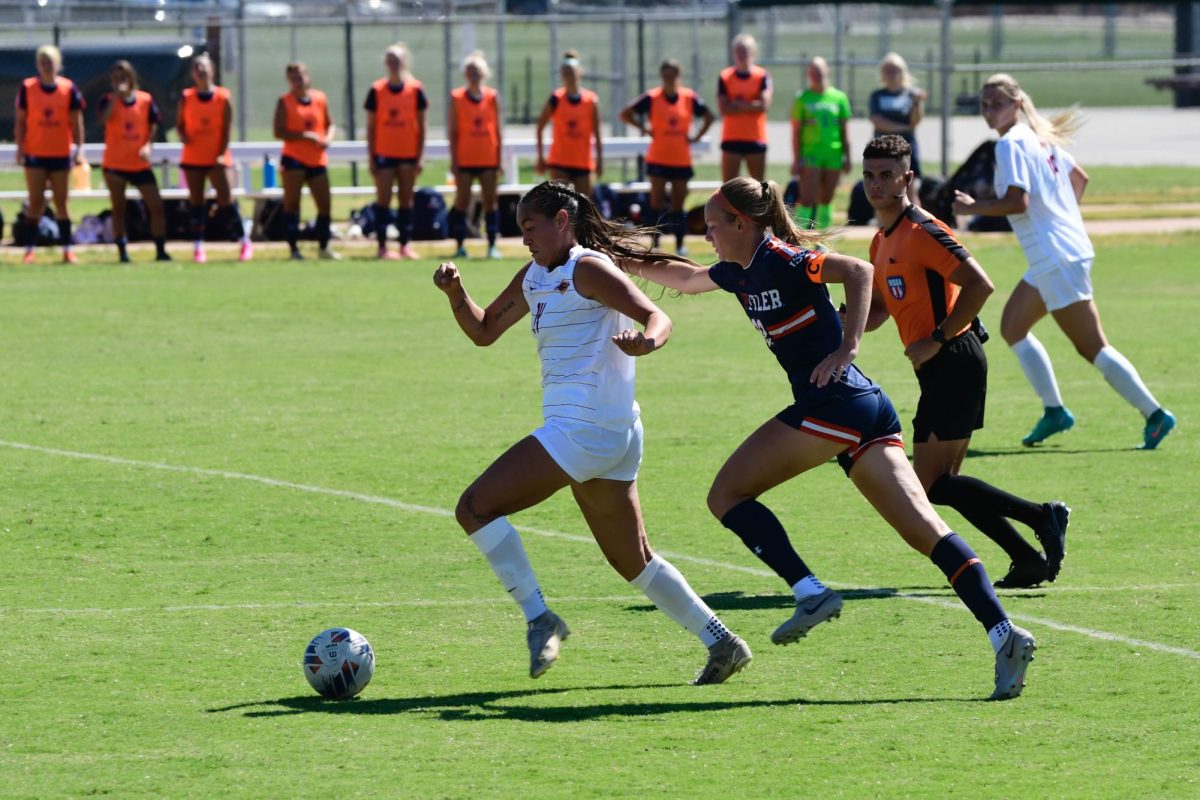
Living with a disability means there is a certain dependency on ramps, braille, elevators and automatic doors in buildings. But although the Americans with Disabilities Act has now enforced buildings to include these things, students with disabilities are still faced with buildings that are not ADA compliant.
President George H.W. Bush signed ADA into law in July 1990. The act enforced an end to discrimination against people with disabilities in the workforce and public education system. Based on the act, ADA compliance is making sure things are accessible to people with disabilities.
“It is the physical accessibility of the campus and that means ramps and the signs in braille,” said Debra Higginbotham, director of Disability Support Services and ADA coordinator.
Ramps, braille, service dogs, elevators and automatic doors accommodate people who have a physical disability. On the other hand, there are other “invisible disabilities” that need different types of accommodations.
“If a person has problems with concentration, we are not going to say, ‘You can do your best work when you’re in a classroom that may be extremely noisy and distracting to you,’” said Higginbotham.
Another portion a lot of people don’t think about is electronic accessibility. With online courses, the university needs to make sure a person with vision impairment is able to use a screen reader. For people with a hearing impairment, if the course refers to a YouTube video, then they need to ensure the video has captions. They need to think about all aspects of the courses. Higginbotham said the law itself sounds simple, but the regulation book is not.
“Our goal is to have everything over and above,” said Higginbotham.
Elizabeth Speegle, history freshman, lives on campus and maneuvers around campus in a wheelchair and at times walks with the help of her crutches. Speegle was born with Cerebral Palsy and has had multiple surgeries to be able to walk.
“It has always been my dream to come to college,” Speegle said.
She chose this school because it was close to home. At the time, she wasn’t concerned about ADA compliance because her disability was not going to stop her from reaching her dream, but once here, she noticed things need improvement.
Speegle said some doors in different buildings aren’t automatic and there’s a need for more ramps around the buildings. She also said some sidewalks are hard to get up or some doors are heavy. The crosswalk on Taft Boulevard is a safety hazard because, “people don’t really see you and slow down.” The library has narrow aisles of bookshelves that she can’t get her wheelchair through.
“It’s not their fault,” she said, “They’re trying their best. It’s because they’ve been around for so long.”
MSU started off in 1922 as Wichita Falls Junior College. ADA compliance standards were permitted in 2010, but not enforced until 2012.
“A lot of the complaints we get are because we are meeting the requirements, but we have such old buildings and it’s so hard to be sure that every door is wide enough,” Higginbotham said.
She said there are standards for the width requirements of doors, however, there are people who need power chairs, which are bigger than that.
“Fain is a nightmare,” said Higginbotham. “It was actually put together pre-ADA. It’s nice and artsy and looks very pretty, but wow.”
Over the years, gradual changes were made to the Fain Fine Arts building. Different plans were looked at to have the whole building up to compliance standards. Higginbotham’s method is to look at how a person gets into the building and then think about where they may go next. She said she has looked at blueprints to double check for ADA compliance.
Ferguson Hall is in the works and Hardin Administration Building is expecting changes of its own.
“Some of the buildings you may say about, ‘Well they don’t look like they’re doing anything,’ and that may be because they’re actually about to come down,” said Higginbotham, “[For the Counseling Center] the plans were for that to come down.”
The funding for these projects comes from a combination, but a lot of it is from the state “HE” a fund.
“There is always some money available that we could get every year,” she said. “Things we are looking at right now are fire compliance and ADA compliance. The good thing is both of these sometimes work hand in hand.”
She said they also have to think about what buildings they should invest the money in and if they aren’t going to configure anything already.
“A lot of times it’s really hard to tell a person, particularly if they’re in a wheelchair, ‘Hang on, we’ve got it in the plans. It’s going to happen,’ because they’re dealing with it on a day-to-day basis,” Higginbotham said. “But the truth really comes down to: you can’t just go in and knock down a wall.”
Higginbotham says this is because the state has to approve the plans of the commendation.
Higginbotham has been working at MSU since the late 80s, which is long enough to witness the changes that ADA has brought to the school. She said when she was director of counseling, before ADA, the disability services consisted of the Vice President making sure that when students complained, the accommodations were made. ADA applied to not only physical disabilities but also learning and psychiatric disabilities.
“My vice president said, ‘Hey you got a background in this, you get to do it,'” Higginbotham said.
This is when counseling and disabilities services were combined, until the two areas grew and split in half and she stayed on the disability support area.
“You could see the change coming,” Speegle said.
Higginbotham said it is important for students to be aware of ADA compliance so people can raise more awareness to the cause. She said it’s important to be informed because, “They may have a sibling, kid, or friend that may need special accommodations.”
Higginbotham also said it’s good to be aware.
“It’s not rude to ask a person, ‘Do you need any assistance?'” Higginbotham said. “Be sure you can do things like that.”
![]()
RELATED STORIES:
- The slow transition to becoming a Hispanic serving institution
- Ethnicity’s role in multicultural sororities
- Baptist Student Ministry members discuss discrimination in religious organizations
- LGBTQ: avoiding the trigger point
- Rednecks: ‘It’s just a way of life’; ‘You get to yell, ‘yee yee’ whenever
- Students fate uncertain pending a possible end to DACA
- Priddy Scholars brings new opportunities to first year students
- Girls choose their sorority based on fit, regardless of skin tone
- Greeks prey to stereotypes; still a ‘necessity’
- A 21st Century look at Discrimination
- Global enrollment continues to grow thanks to university’s outreach program
- Office becomes home to new director and students
- Brother realizes fraternity not understanding, welcoming
- Senate Bill 4 changes the way officials handle immigration












